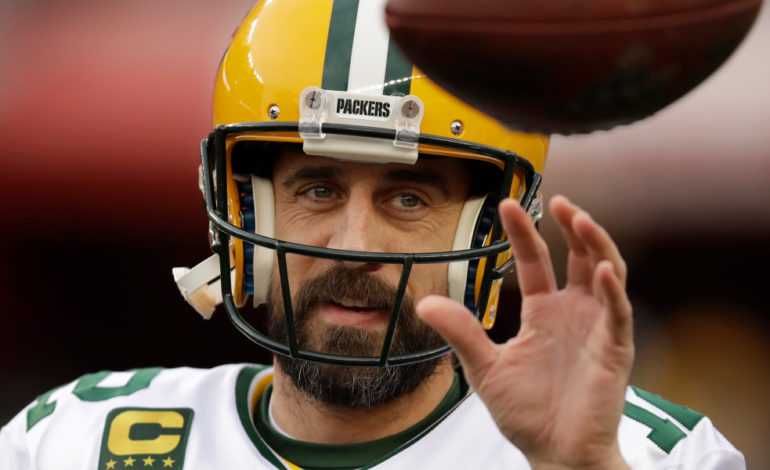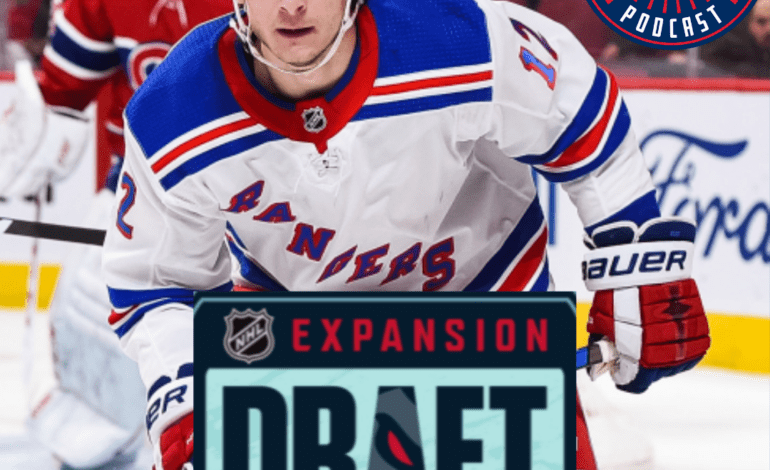As the NBA Draft approaches, the “light at the end of the tunnel” for Rockets’ fans has gotten brighter. After a season of disappointment, the Houston Rockets won the second overall pick in the NBA Draft Lottery. This was huge for Houston. Following the Russell Westbrook trade of 2019, the pick was heading to Oklahoma City had it fallen out of the top four. There was a 48-percent chance Houston lost their pick entirely. Now they have the potential to add another young franchise-altering player. What could fans be upset about?
The answer is simple: who is that player going to be? Online there’s the “Mobley Mob” that has been lobbying for the seven-foot twenty-year-old Evan Mobley from USC. The Trojan Pac-12 Player of the year has the potential to be the modern big man and is the classic “high ceiling low floor” type of player. So what is the other option?
A higher ceiling (and slightly lower floor) prospect in Jalen Green. Green opted to play for the G League Ignite out of high school, giving him a front-side seat to professional basketball. He was a force in the G League Bubble in the same way several NBA players called up afterward were. Aleksej Pokusevski, Moses Brown, Alize Johnson, and the Houston Rockets own KJ Martin and Kevin Porter Jr. were all called up and made immediate impacts in the NBA following that bubble, and Jalen Green (as the “Green Gang” would tell you) had the second-most points per game in it.
If that weren’t enough, there is a contingent of Rockets’ fans who want to see Houston make a swap with Detroit. Assumed number one overall pick Cade Cunningham is the consensus top prospect in the draft, as a 6’8” scoring and creative playmaker should. Detroit has the number one pick, and reports indicate The Pistons would move back for a steep price.
How did such an enviable position become such a problematic one? Let’s break down the players Houston could take.
Evan Mobley is worth the Mob
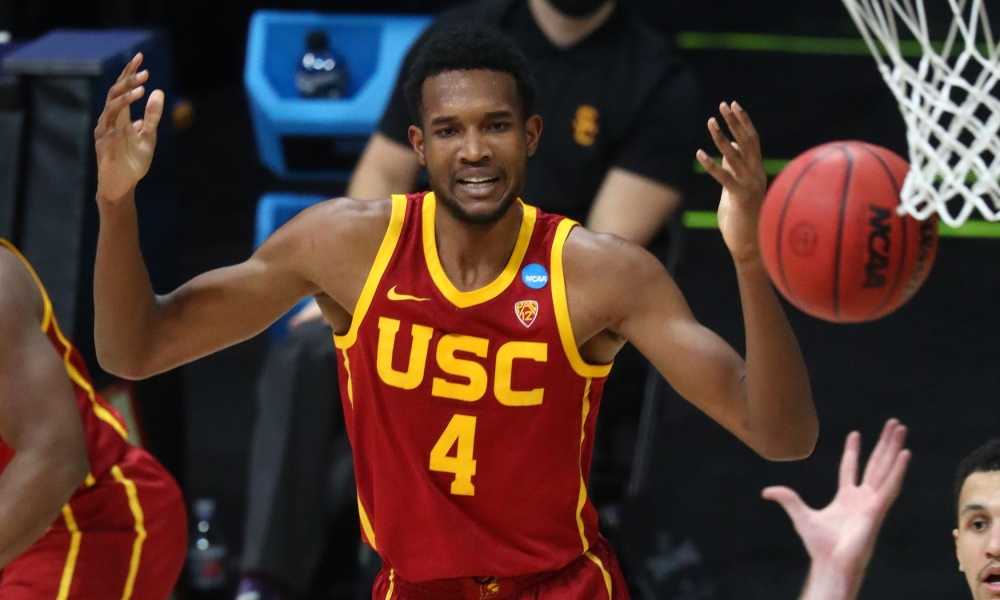
Evan Mobley is the kind of number two pick that in the vast majority of historic NBA drafts would be the certain number one pick. Mobley just turned 20-years-old, is seven feet tall, and has a seven-foot-four wingspan. He fits into the modern big man role very well on both ends of the floor. He is a three-level defender with great instinctive timing and is a selfless roll man off of dribble-hand-offs and screens.
Where Mobley shines is on the defensive end. Mobley uses his length and instincts to deter opposing offensive players. He tracks the ball with every inch of his seven-foot-four wingspan and gallops into two-foot explosive blocks that start fast-breaks. Mobley explodes quickly and has phenomenal timing as a shot-contestor. He has high hips but at the college level was able to switch in the pick and roll regardless of the ball-handler’s position. However, where he was used best in the pick and roll was as a drop defender. He seamlessly cuts off the ball and recovers to the roller in a way that reminds us of Giannis Antentokounmpo’s block in the waning minutes of Game 4 of the NBA Finals. He truly does as well a job of playing both the ball and the roll as well as any prospect in recent memory.
Offensively, he will be a roller with a diverse array of options from day one. He can navigate a deep roll to the rim and finish with high efficiency. On the short roll, he is a willing and able passer. In Houston, he would do a great job because head coach Stephen Silas’ offense is predicated on moving the ball from one side of the floor to the other. Mobley’s short roll would make him the playmaker and decision-maker. He would decide when the ball flips and when it doesn’t. And if the defense overreacts? Mobley’s go-to-move is to jab (which is extra effective with his pass fake) and attack the basket with an array of finesse finishes. His craftiness around the rim isn’t flashy, but it is very much applicable to the current NBA.
Areas for Growth
Where Mobley will develop is as an athlete. His 215 lbs frame will need to be fleshed out to battle with NBA bigs on the inside. The notoriously skinny Kevin Durant is of similar height with a similar wingspan and weighs almost thirty pounds more. Durant is almost exclusively a perimeter player with All-NBA level guard skills. Mobley will be trying to absorb contact at the rim to deter drivers. In gaining weight, Mobley should also get stronger and more explosive. Truly explosive NBA players have a “double” burst. That means they explode horizontally (think about getting past a defender) and transition into exploding vertically (think about a big dunk over slow helpside).
Mobley’s first burst is as good as anyone coming out of college basketball, whether it’s horizontal or vertical. But the second pop to the rim, offensively and defensively, isn’t as strong as most young NBA starters. This is developable, but there is no magic “light switch.” Mobley will develop as an athlete over the next few seasons. His floor is as high as any in the NBA Draft- he’s a long seven-footer with great timing and a better feel for the game.
Jalen Green Gang onto Something
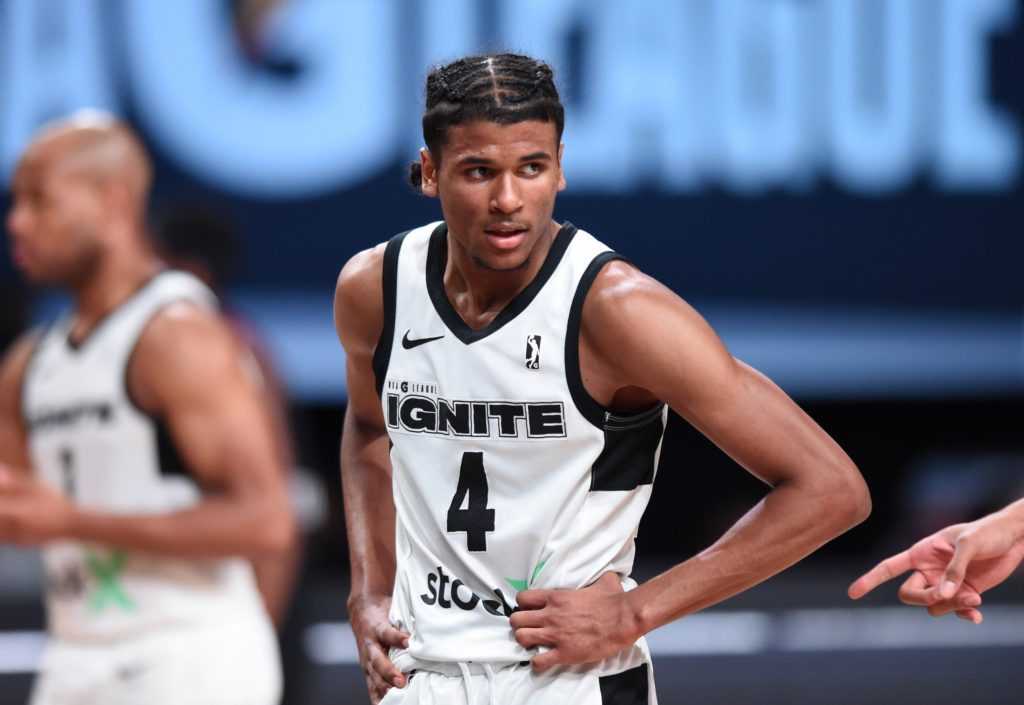
Jalen Green is a prospect who would have dominated guard-laden college basketball if he had gone the traditional path. At six-foot-six with a six-eight wingspan, Green is a “hooper’s hooper.” His fluidity with the basketball makes him a threat at all three levels. On a floor of professionals, his explosiveness leaps off the screen. Green is as developed a three-level scorer as anyone could be coming into the NBA. He steps back into the midrange, he bursts to the basket, and he can catch and shoot from three.
Offensively, Green is simply a scorer. Whether he starts the ball with the ball or without it, he can clearly score at an NBA level. With the ball, he was best when heading downhill. It’s not that he has to attack the cup to score, but his sudden bursts to the rim show off the quickness he jumps from “first gear” to “fourth gear.” Green can force the defense to collapse and allow him to create like a giant scoring point guard on his speed alone. If the defense doesn’t abandon rotation and swarm him, no single defender in the NBA G League was able to keep up with him in the air and around the rim. Green has the mythic hang time that keeps elite scorers in the air longer than his defenders, and as they try to predict his movements he’s fast-twitchy enough to evade them.
Where he fits a Silas offense is in playmaking when he attacks the rim. Silas runs a five-out offense, and thus the defense has further to recover when a driver attacks the rim. Green repeatedly showed the ability to find open players when the defense is mid-rotation. He hits them in the pocket on the roll and in the corner. He won’t be a traditional Point Guard, but he takes advantage of defensive decisions in transition as if he were.
Areas for Growth
Green will need to continue to develop his body. At just 180 lbs Green suffers defensively because he gets moved around. In the G League bubble he made up for that deficiency by gambling, but that won’t suffice in the NBA. Those gambles will get him beat more often than they did in the G League, and he is going to need to play more sound defensively. Similarly, he gets “too cute” with his handle in traffic. He can’t protect the ball with strength, so he shifts laterally a few times and gets into trouble. Again, these are all things that can get fixed, but they need to for him to hit his ceiling.
Trade for Cade

While it feels less and less likely, the Houston Rockets did reportedly make some inquiry about moving up in the draft (presumably) to get Cade Cunningham. Cunningham is the consensus top pick and has one of the most pro-ready games in recent memory. At six-foot-eight, 220 lbs, with a seven-foot-one wingspan, Cunningham is built longer than Green, stronger than Mobley, and his game compares to young superstars Jayson Tatum and Luka Doncic.
When Cunningham is on the floor, the offense runs best with him dictating the movement of his four teammates. He shoots well enough off of the dribble to beat drop coverages in the pick and roll, passes with enough precision to exploit a poor rotation, and finishes around the rim with strength and poise. While his assist numbers don’t scream “NBA Point Guard,” any film breakdown makes it very clear he has the vision to be a modern Point Forward. Teams had to regularly trap and double Cunningham to get the ball out of his hands, and at times his beautiful skip passes hit shooters unable to convert.
To get him open, Oklahoma State used varied flairs and pin downs with him off of the ball, which allowed for him to show off his ability to catch and shoot (shot 43% from three on catch and shoot opportunities, 41% from three overall). Defensively Cunningham is a giant perimeter defender that gets his chest to the ball and uses his length on the help side. In college he was asked, at some point, to guard all five positions and did so well.
Areas for Growth
As he grows up, the nineteen-year-old Cunningham will need to learn to use quickness and strength as complementary tools. Where he got in trouble at times was that he too regularly resorted to lowering his shoulder and using his size, but that led to foul trouble in several Big XII games. NBA defenses will be even smarter, and Cunningham will need to mix it up. Cunningham has the highest floor in the draft of any prospect.
Wait- Who is Jalen Suggs?
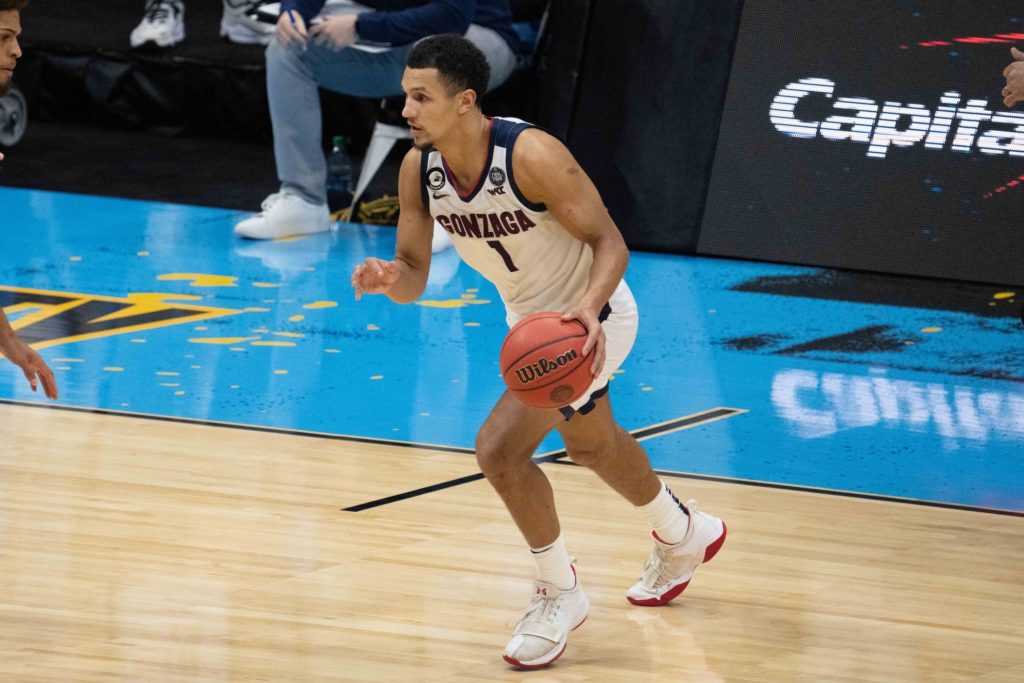
Last week, The Athletic’s Zach Harper reported that the Houston Rockets were content to draft Jalen at the two spot… but which Jalen? Per the report, Houston was also looking at Gonzaga Bulldog Jalen Suggs. Suggs is a six-four point guard with every cliche leadership intangible in a Miriam-Webster dictionary. He was an All-State quarterback in high school and it’s obvious. He runs a half-court offense as if he’s calling audibles from under center.
Suggs was the engine of a 31-1 Gonzaga Bulldog team that lost in the NCAA championship. His brightest moment was a deep game-winner in the Final Four over UCLA. In classic Point Guard fashion, Suggs is a selfless scorer that makes plays in transition as if it were a five-on-none practice drill. In modern Point Guard fashion, he’s got an explosive motor that never ceases to amaze you. He regularly bursts past defenders in half-court settings and creates his own fast-break type of advantage. Frequently, he elevates to the rim over slower help-side defenders.
Suggs’ quarterback intangibles are often discussed, and his crosscourt and outlet passes show precision molded on the gridiron as well.
Where Suggs falls to a top-five pick, and not the top pick, in this draft is in his size. He scores best at the rim, but to finish at the rim in the NBA is a very different task. To be the same kind of scorer and bend the defenses Suggs will have to become a more consistent shooter. He had games like Iowa where he shot seven-for-ten from deep but also had games like Oklahoma where he went one-for-six. On the season he shot 33.7-percent from three. If he were to get into the upper 30’s, it would pull the defense out in a way that actually opens up his paths to the rim. And if he got into the ’40s? He would be one of the best prospects in the last decade.
It’s worth pointing out that it was his first year of “only” high-level basketball, where Cade Cunningham went to Montverde for basketball exclusively and Jalen Green opted to go pro instead of going to college. Suggs is going to need to continue to fine-tune his handle as well. There were times he had what looked like brain farts and lost the ball in traffic. He’ll likely grow out of that, and the shooting woes, but they slot him behind a guy like Cunningham right now.
Why Suggs?
The Rockets shouldn’t be unhappy with Suggs in their uniform, but the report from Harper reads like a smokescreen. The Rockets’ rebuild is all about the future. Trading back to the fourth or fifth pick for Suggs and future picks is a longer-term solution.
A recent example of this is the Luka Doncic – Trae Young trade. Atlanta drafted Doncic at three, then flipped him to Dallas. Atlanta received Trae Young and a pick the following year (that pick turned into Cam Reddish). Doncic has had a stellar individual career. Atlanta has used the assets (the next year they moved their own picks around and got De’Andre Hunter, then flipped other assets into the Clint Capela trade) to build an Eastern Conference Finalist around Young. Adding a top ten pick added to the assets General Manager and President Travis Schlenk could work with.
This is the first time Houston’s Rafael Stone has zero draft experience to go on. Stone was promoted to Vice-President of Basketball Operations in 2019, and General Manager in 2020. Houston’s last draft pick was in 2018, and their last first-round pick was in 2015.
What really happens?
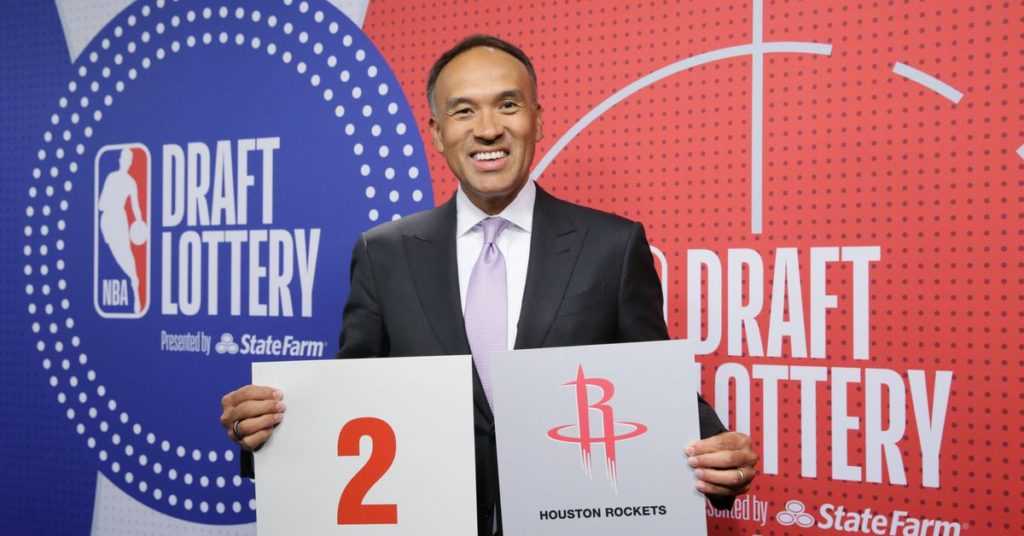
Look- each of these three guys has a very real chance to be the cornerstone of a successful NBA franchise. The upside is very real. Even with a proper cornerstone, the bigger issue may be what Houston does with the rest of their off-season.
Say Houston does draft Evan Mobley. He brings great defensive flexibility and length, but Houston also needs to find ways to add perimeter scoring. Do they luck into Ziaire Williams or Joshua Christopher at their later picks? Or, more likely, can they throw a bag at Lonzo Ball this off-season? Ball has developed into a trustable three-point shooter that can play on and off the ball. Ball is almost 24 years old, and his flexibility on offense pairs well with dual-threat Kevin Porter Jr. Even if it isn’t Ball, if Houston goes with Mobley they do need to do something to help their perimeter offense. Porter Jr. is capable, but he can’t do it alone and the game is becoming more and more perimeter-focused.
Similarly, if Houston takes Jalen Green (or Cunningham) they need to spend big money on a big guy like John Collins. Collins is a mobile six-foot-nine forward that can attack and collapse defenses in multiple ways. He is a skilled passer, explosive scorer, and still isn’t even 24-years-old. Collins, or someone like him, compliments Christian Wood. Both bigs can score and distribute from beyond the arc and on the short roll. This forces the defense into unfavorable matchups while maintaining the five-out offensive sets head coach Stephen Silas runs.
Wood is a great, young, modern big man, but Houston’s defense last year showed glaring holes when there was just one “big” on the floor. Or do they think they can develop an Isaiah Jackson, Kai Jones, or Day’Ron Sharpe? If it’s not Collins or a prospect, do the Rockets offer a contract to Mitchell Robinson or Jarrett Allen?
Houston’s job is not done with the second overall pick. But the second pick itself is both the key and launchpad for the rest of the offseason. The player Houston goes with will give the Rockets’ rebuild a direction.
“But- what would YOU do?”

I don’t think you can pass on Jalen Green as it stands. Jalen Green can play multiple positions on the perimeter. He’s played at the highest level of any prospect. Most importantly- Green played very well while he was there. His offensive game offers a great yin and yang with Kevin Porter Jr. Where Porter is crafty and changes gears well, Green offers raw athleticism. Both can utilize Double-Drag and Horns sets in Silas’ five-out system. Both can play off the ball when the other is on it. Green turns twenty next season, Porter Jr. just turned 21. Together they have the potential to grow into a formidable backcourt built for the modern game.
Teams drafting this early have a lot of holes. No single player can fill them. But Houston does have money to spend in Free Agency on a big to pair with their young backcourt. Even with John Wall’s full contract, Houston will be more than $25 Million below the Luxury Tax threshold. Houston shouldn’t throw all of it at one player, but they could go get a coveted “Max Player” with very little maneuvering. Further, with Christian Wood already on the roster, the Rockets can get away without having their cornerstone be their Center.
For whatever it’s worth, all reports around Jalen Green say he has the “it” factor. Professional coaches from his season with the Ignite, his time on the National Team, and the Pre-Draft process all comment on how special Green is. Specifically, everyone shares that he has a professional mindset. He’s business-like in his approach, he is singularly minded, and he demonstrated all of the intangibles in the highest level of American basketball short of the NBA.
The Houston Rockets don’t have any obvious way they can go wrong in the 2021 NBA Draft. That’s a good thing. There are just some ways this can go really right.
In the current NBA, the Finals are being led by teams with a 15th pick (Giannis Antetokounmpo) and a 13th pick (Devin Booker). The NBA MVP (Nikola Jokic) was a 41st draft pick. Three-time Defensive Player of the Year (Rudy Gobert) was a 27th draft pick. The last half-decade featured a dynasty built on a 7th draft pick (Steph Curry), 11th draft pick (Klay Thompson), and a 35th draft pick (Draymond Green). The Houston Rockets are in a great position to build a contender quickly, but the key factors will be developing whomever they draft and what they build around them.


